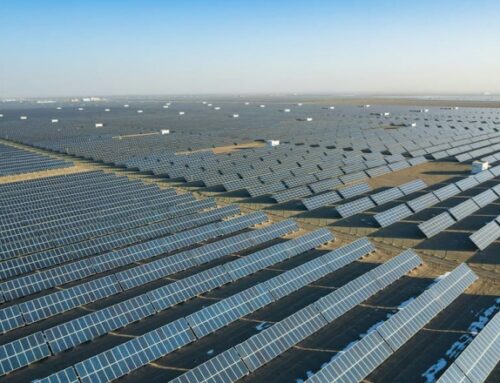CONNECTIONS: Stockbridge today (Part Two — Specifics)
December 31, 2024
Introduction
What are you willing to give up in exchange for more affordable housing and more clean energy? The two pieces of legislation signed into law in 2024 are not win/win; they are trade-offs.
In the new laws, the Commonwealth sets two goals: creating more affordable housing (65,000 units over five years) and, by creating more renewable energy as quickly as possible, drastically reducing greenhouse emissions (50 percent by 2030; net zero by 2050). Laudable goals, and while we may all agree in principle, the devil, as they say, is in the details.
The new laws seek to grease the wheels and remove obstacles. What are the obstacles? That would be us—we and our local bylaws. So the question is, how much local control are we willing to give away to accomplish the goals? The underlying question is, do we still have the ability to decide, or do the two laws mandate loss of control? Do we want to accede or fight the new laws?
Climate and Clean Energy Bill
This is development. The developer (the Commonwealth) is providing the money to build and install wind turbines, solar panels, battery storage facilities, electric substations, and power lines. The new law includes nuclear fission as renewable energy—that is, splitting atoms to create energy (all nuclear power plants use nuclear fission).
In any discussion of development, the point of debate will always be the same: meeting the goal versus alteration of the landscape. The developer (the Commonwealth) wants to know the number of solar panels needed to reach its goal and where they can be built.
To reach its goal, the Healey-Driscoll administration projected that it would build about 27,000 megawatts (MW) of solar capacity by 2050. Further, it is expected most of that will be ground-mounted solar.
A “regular” solar panel is 200 watts. One megawatt is 1 million watts, so 5,000 panels to generate one megawatt; generating 27,000 MW requires a lot of solar panels. Where are you going to put them? In addition, the state estimates they need 24,000 MW of wind turbines, most of which are expected to be built offshore. Our incoming president expressed a wish to stop offshore projects. If he follows through, then the Commonwealth must increase onshore wind or increase the number of solar panels. Again, where?
A map recently commissioned by the state shows potential for wind turbines and solar panels. Berkshire County is not first; it is second, behind Worcester County. Although our county is smaller than Worcester County, the map shows Berkshire County potentially hosting a disproportionately greater amount of the needed—perhaps as much as 15 percent of the landmass of Berkshire County.
View the map here.
We must consider: What is the acceptable loss of forestlands and wetlands, and what is the acceptable density of “green” energy producers? That is the battleground; that is the point of negotiation. Or is it?
Under the new law, for projects smaller than 25 MW, towns must issue a single permit within 12 months applying mandatory guidelines set by the state. For projects 25 MW or larger, the state government takes over the permitting. The host community can submit comments but has no other power over the decision. Locals who abut the project or oppose it have no standing or right of appeal.
Just a glance at a few related problems. What happens to the workers in the fossil fuel industry as it disappears? Electricity rates are soaring. Those with electric heat pay as much as $1,000 per month in winter. The new law mentions tiered electricity rates for moderate- and low-income earners, but are they mandated? What specifically are the concerns about erosion and inland flooding?
What are you willing to trade for the Commonwealth’s clean energy goals?
The “Seasonal Community” designation (SCD) and the tiny home
The tiny house is a maximum of 400 square feet or less, or a space 20 feet by 20 feet or less. It is required that ceiling height be no more than six feet, eight inches. Standard is seven feet, eight inches. Moreover, tiny houses cannot be short-term rentals.
I have a question: Why can’t we grant people dignity even if they cannot afford to pay as much for housing as other people? Why can’t we grant them the dignity not to place affordable houses in a swamp where the driveways crack and the buildings sink? Why do we build affordable housing on poisoned land? Why do we place affordable housing between a dump and a cell tower interrupted only by a solar-panel field? And now we are going to ask town employees to live in tiny houses without even enough headroom, and certainly no room for a family. That’s the plan?
That is not even the worst of the community problems. The Seasonal Community portion of the AHA mandates that communities build tiny homes on tiny lots. In fact, it mandates building on what local communities, in their local bylaws, deemed unbuildable lots. Why do we now propose to place tiny housing on tiny lots too close together? The result will be increased density.
Moreover, SCD may make mandatory a distinctly unpopular tax: the Residential Tax Exemption (RTE). Now RTE is optional. It is voted on annually and capped at 35 percent. The Seasonal Community designation, if adopted, increases RTE to a 50 percent reduction for principal residence owners shifting the tax burden from year-round residents to owners of seasonal or higher-valued homes.
We may be pro-RTE or anti. We may think the trade-off, the loss of local control, is worth it in exchange for the major investments in affordable housing and cleaner air. On the other hand, we may be passionate about our Berkshires as is. We may want to preserve that which makes Stockbridge Stockbridge and Lee Lee, which is, by the way, the basis of our economy. This is not about where we stand; it is about who should decide. Do we accept these two laws, or do we fight for terms that retain more local control? Either way, a sales pitch is not the answer. A dialogue, at this juncture, about what can and should be done, is.
Click here to read Part One of this story.
Search
RECENT PRESS RELEASES
Related Post


